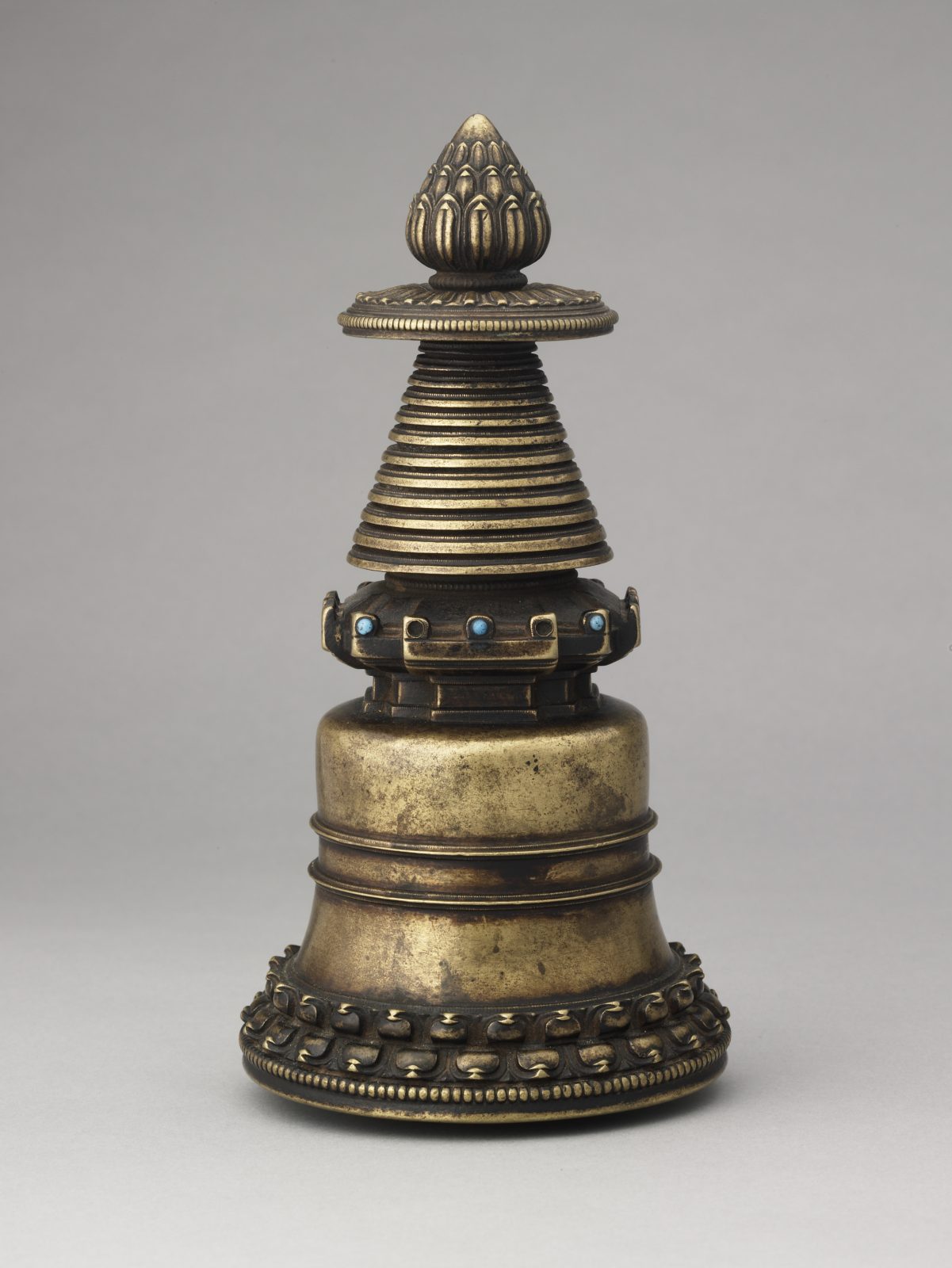

This week’s meditation session is led by Kate Johnson and the theme is Gratitude. The guided meditation begins at 13:21.

Stupa; Tibet; 13th century; Copper alloy; Rubin Museum of Himalayan Art, Gift of Shelley and Donald Rubin; C2006.66.635
The stupa is a symbol found across all Buddhist traditions. It originated in India as a mound made to hold sacred remains, like those of the historical Buddha Shakyamuni. Stupas are not limited to containing the mortal remains of a holy person—they can also include objects associated with that person, such as clothes, sacred texts, articles of worship, and figures made of clay and the ashes of the deceased (tsatsa). While a statue or painting of a buddha represents the divine body of an enlightened being and a book symbolizes divine speech, a stupa represents the mind of supreme spiritual awakening, making it a symbol of buddhahood.

Kate Johnson works at the intersections of spiritual practice, social action, and creativity. She has been practicing Buddhist meditation in the Western Insight/Theravada tradition since her early twenties and is empowered to teach through Spirit Rock Meditation Center. She holds a BFA in dance from the Alvin Ailey School/Fordham University, and MA in performance studies from NYU.
Kate is a core faculty member of MIT’s Presencing Institute, and has trained hundreds of leaders and change-makers in using Social Presencing Theater, a mindfulness and dance improvisation methodology used to inform strategic planning and systems change in our complex world.
Get the latest news and stories from the Rubin, plus occasional information on how to support our work.